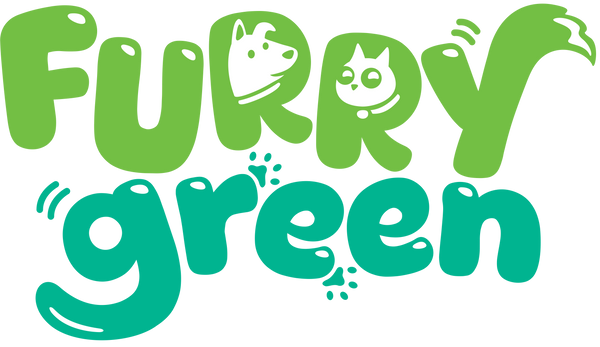
Grain-Free Diets, Fresh Feeding, and Your Dog’s Heart: What Pet Owners Need to Know About DCM
Share
Grain-Free Diets and DCM: Separating Fact from Myth for Your Dog’s Heart Health
But what exactly is the problem? Is it really the peas, lentils, or potatoes in grain-free foods that “cause” heart failure? Let’s separate fact from myth -- and look at how to safely feed fresh or raw diets without putting your dog’s heart at risk.
1. What is misunderstood about legumes and potatoes
It is not correct to say that “peas or potatoes cause DCM.”
- What researchers found is an association between some diets high in legumes/potatoes and cases of DCM.
- Many of these diets are “grain-free” and often made by smaller, "boutique" companies that use legumes as the main carbohydrate or protein source.
- But not all dogs eating these foods develop DCM, and not all dogs with DCM were eating grain-free foods.
So, legumes/potatoes themselves are not proven toxins. The concern is about diet formulation as a whole -- how much of the protein is animal-based, how amino acids are balanced, and whether the diet meets nutritional standards.
2. Why the “bile salts and taurine” explanation is oversimplified
Some articles say the problem is:
Legumes block bile salt absorption → the body uses extra taurine to make new bile salts → taurine deficiency → DCM.
While that sounds neat and tidy, it’s not proven in dogs. Research suggests several possible mechanisms, including:
- Lower methionine and cysteine (building blocks of taurine) in legume-heavy diets.
- Anti-nutritional compounds in legumes, like phytates, that may affect digestion and nutrient absorption.
- Fiber altering bile acid recycling.
- Or even unknown interactions in boutique diet formulations.
Importantly, some affected dogs had normal taurine levels, so taurine deficiency alone cannot explain every case.
3. How to minimize DCM risk if feeding fresh or raw diets
Many owners prefer to feed fresh, home-prepared, or raw diets, but these must be carefully balanced to avoid nutrient gaps that can harm the heart. Here’s how to lower risk:
- Work with a veterinary nutritionist (DACVN or ECVCN) to formulate diets that meet AAFCO or NRC standards.
- Prioritize animal protein: meat, poultry, fish, organ meats (especially heart), and eggs provide taurine and sulfur amino acids.
- Avoid heavy reliance on legumes/potatoes as the main carb or protein source.
- Monitor health: at-risk breeds (Golden Retrievers, Cocker Spaniels, Newfoundlands, Dobermans) may benefit from periodic taurine blood tests or heart checks.
- Choose commercial fresh/raw brands carefully: look for those with nutritionists on staff and nutrient analysis data, not just “grain-free” marketing.
4. Practical guidelines for animal protein
Dogs don’t just need “protein” -- they need the right balance of amino acids. To support heart health:
- Total protein: Aim for 60-75 g protein per 1000 kcal of food.
- Animal protein: At least 40-55 g per 1000 kcal should come from animal sources (≥65-75% of total protein).
- Foods rich in taurine and amino acid precursors include chicken/turkey thighs, beef, fish, heart, and eggs.
Example (medium dog ~1200 kcal/day):
- Total protein: 72-90 g/day
- From animal sources: 50-63 g/day
Conclusion
The relationship between diet and DCM is complex and still under investigation. Legumes and potatoes themselves are not “poisons,” but diets that rely too heavily on them, without enough high-quality animal protein, may create nutrient imbalances that put some dogs at risk.
The safest approach? Feed a Furry Green's balanced diet designed by a veterinary nutrition expert, prioritize animal protein, and work closely with your veterinarian to monitor your dog’s heart health.
Shop Balanced Fresh Food NowShort, Practical Checklist for Feeding Fresh or Raw Diets
Reducing the Risk of Diet-Associated DCM:
- Balance matters: Use recipes formulated by a board-certified veterinary nutritionist. Avoid “homemade recipes” from random blogs without nutrient testing.
- Protein quality: Aim for 60-75 g total protein / 1000 kcal. At least 65-75% of that protein should be animal-based. Best taurine sources: chicken/turkey thighs, beef, fish, heart, eggs.
- Carbohydrates: Legumes and potatoes can be included in small amounts, but should not be the main protein or carb source.
- Choose wisely if buying commercial fresh/raw: Look for brands like Furry Green that employ a veterinary nutritionist. Ask if the diet has been tested to meet AAFCO standards.
- Monitoring: High-risk breeds (Golden Retrievers, Cocker Spaniels, Newfoundlands, Dobermans) may need blood taurine testing or echocardiograms. Report changes in exercise tolerance, coughing, or fainting to your vet promptly.
Frequently Asked Questions
Are peas and potatoes toxic to dogs?
No, peas and potatoes are not proven toxins for dogs. The concern highlighted by the FDA investigation is the association between diets high in these ingredients and canine DCM. The issue seems to be related to the overall diet formulation and nutritional balance, especially when legumes replace a large portion of animal-based protein, rather than the ingredients being inherently harmful in moderation.
Does my dog need a grain-free diet?
Most dogs do not have a medical need for a grain-free diet, as true grain allergies are uncommon. Given the potential link between certain grain-free diets and heart conditions like DCM, a well-balanced, grain-inclusive diet formulated by nutrition experts is often considered a safer choice for many dogs.
How can I ensure my dog's fresh food diet is safe and balanced?
To minimize health risks, it is crucial to work with a board-certified veterinary nutritionist (DACVN) to formulate a diet that meets established standards (like AAFCO). Prioritize high-quality animal protein, avoid over-reliance on legumes, and choose commercial fresh food brands that employ veterinary nutritionists and conduct feeding trials, such as Furry Green Pets.
References (for owners)
- FDA Investigation into Potential Link between Certain Diets and Canine DCM: Read on fda.gov
- eClinPath: Taurine Information
- Freeman LM et al. (2018). “Diet-associated dilated cardiomyopathy in dogs: what do we know?” Journal of the American Veterinary Medical Association.
- Tufts Clinical Nutrition Service: Visit Petfoodology
- WSAVA Global Nutrition Committee: Global Nutrition Guidelines
